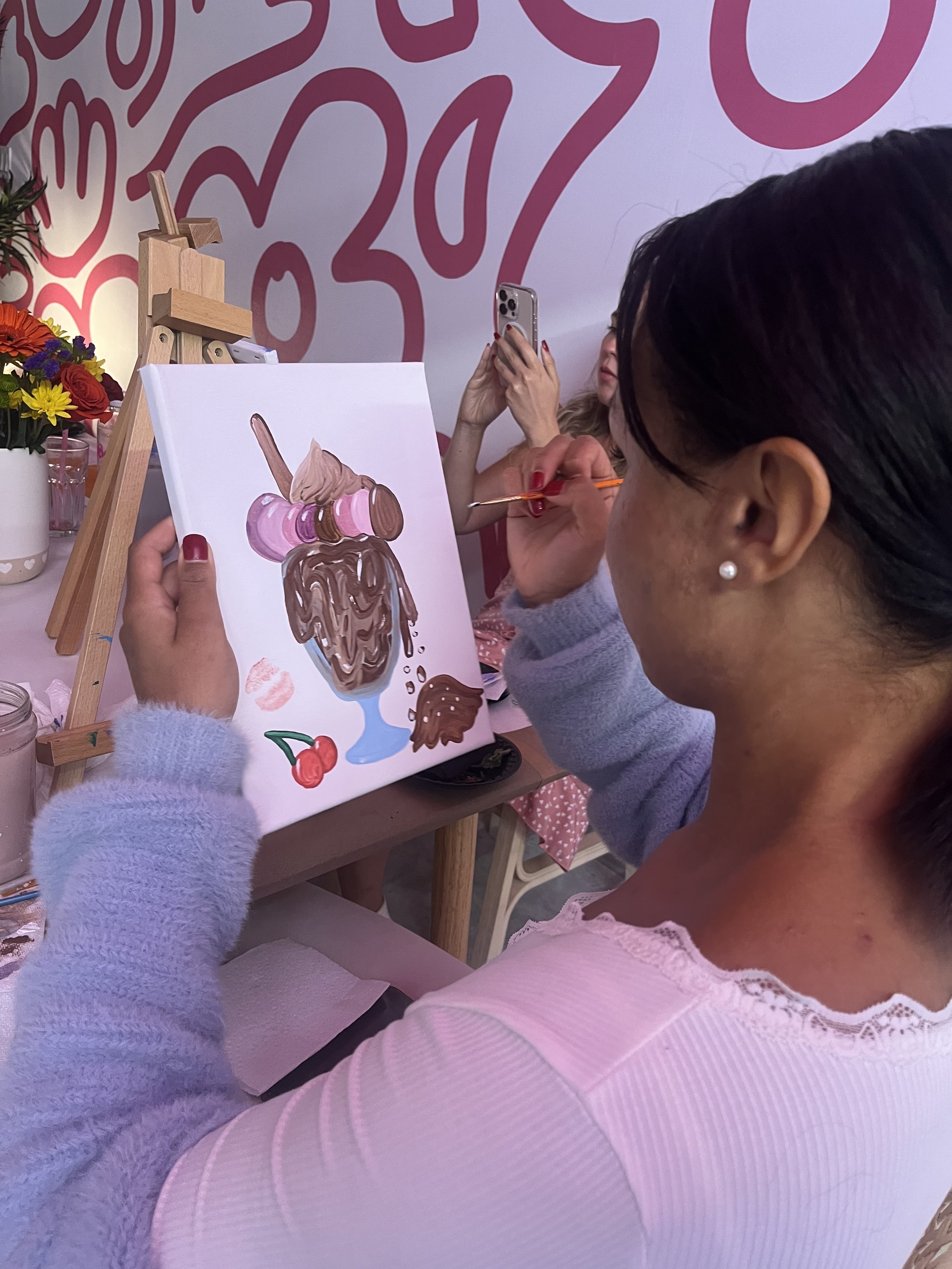Acrylic Paint:
Bold, Flexible, and Ready for Anything
If watercolor is the soft whisper of the painting world, acrylic is its bold, loud, shape-shifting cousin.
There’s something endlessly satisfying about acrylic paint. It’s vibrant, versatile, and a little dramatic—in the best way. You can water it down until it flows like watercolor or build it up in thick, textured strokes that practically sculpt the canvas.
It dries fast, grabs onto almost any surface, and forgives a whole lot of mistakes. What’s not to love?
Over the years, acrylic has become one of my go-to mediums—not just for how it looks, but for how it adapts. Whether I’m working on canvas, painting a cardboard prop, customizing a denim jacket, or decorating a wall, acrylic always shows up and shows off.
What You Can Paint On
Acrylics are flexible—literally. Once dry, the paint forms a slightly plastic surface that bends without cracking (depending on how thick you go). That’s why it’s so loved for:
• Canvas (classic, absorbent, ready to hang)
• Cardboard (great for practicing or making quick pieces)
• Fabric (costomize your own hand-painted jeans, jackets, and tote bags)
• Wood (especially for murals or home decor)
• Accessories (shoes, hats, skateboards… go wild)
*Tip: For brighter colors just prep the surface with a light sand or base layer (gesso or acrylic paint), and you’re ready to rock.
Supplies: What You’ll Need to Start
Like most things in Muse&Flow life, you don’t need much to begin—just curiosity and a few essentials:
1. Paints
Start with a basic set of acrylic paints. You’ll want primaries (red, yellow, blue), black and white (optional), and maybe a couple of bonus colors you just love.
Acrylics dry quickly, so keep a spray bottle of water nearby to keep your palette from hardening too fast.
2. Brushes
I recommend at least three to explore different textures:
• Flat brush (¾” or 1”): for large areas and color blocking
• Round brush (size 6–10): great for curves and layering
• Detail brush (size 0–2): for outlines, lines, and small magic moments
Look for synthetic brushes with firm bristles that can handle thicker paint.
3. Palette & Water Cups
You’ll need two containers of water—one to rinse, one to moisten. A plastic or glass palette is perfect for mixing and blending. Acrylics can dry fast, so move quickly and play freely.
4. Surface
Canvas boards, thick paper, wood panels, or any of the media mentioned above. As long as it can hold some weight, you can probably paint on it.
5. Optional Outlining Tools
Outlining your design before painting can help, especially for beginners. But keep it soft—a light graphite sketch or a watercolor pencil works best. Anything too dark might bleed through the lighter colors or stain your whites
So Many Styles, So Many Techniques
Acrylic is a shapeshifter. You can thin it with water or medium and mimic watercolor. Or you can build it thick, almost like oil. It works fast, dries faster, and lets you layer without fear.
Coming up next: I’ll be adding some of my favorite techniques—like blending, smudging, and color blocking—to help you explore acrylic in all its glory.
But for now? Just open a few tubes, grab a brush, and see what happens.
Closing Thoughts
Acrylic doesn’t ask for perfection. It asks for presence.
It’s for bold moves, messy joy, and pieces that evolve as you go. So paint on paper. Paint on jeans. Paint outside the lines.
And most of all—don’t forget to enjoy the process.






